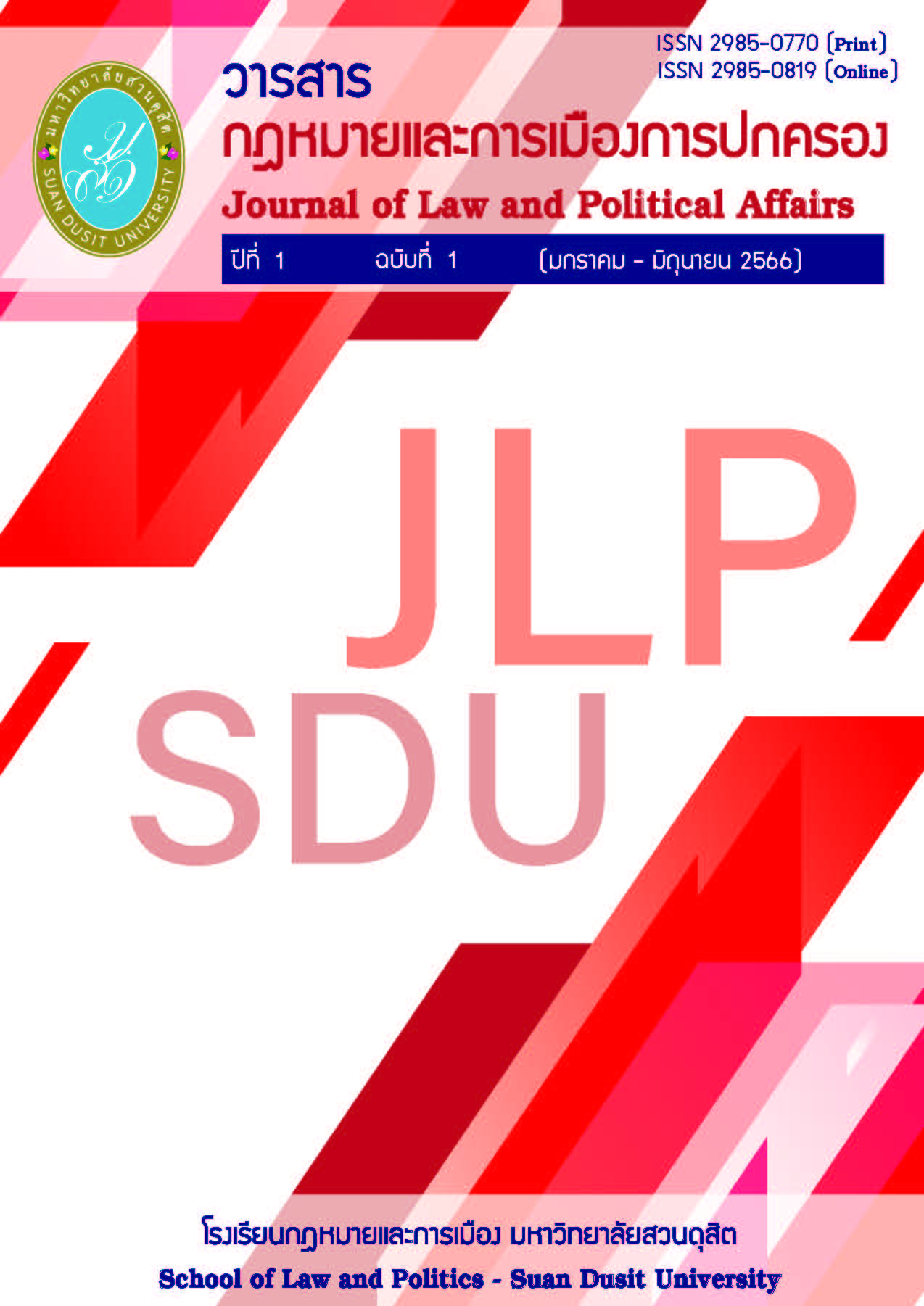Forensic evidence analysis in rape cases
Ployayap Sriyotchotiwat
Keywords:
Forensics science , Rape, EvidenceAbstract
The objectives of this research were to analyze crime plans and evidence and problems in forensic science in rape cases. It was a qualitative research by interviewing investigators and the sentenced rape cases were analyzed to analyze the data. The results of the research found that. There are 3 types of plans for the offenders of rape cases: 1) external stimuli, i.e. alcohol addiction, intimacy, and the victim's internal provocation being mentally ill and lacking good conscience 2) having the right opportunity to commit wrongdoing 3) suitable environment Evidence in a rape case has similar characteristics as follows physical examination of the victim examination of secretions identity verification examination of environmental witnesses and personal witnesses the obstacles in collecting evidence are various evidences. That will lead to the arrest of the perpetrators destroyed over time and deteriorated, unable to examine evidence the victim is afraid of the offender because of intimidation or the offender influences the victim causing the victim to not report and leave it for a long time.
References
กองปราบปราม กองบัญชาการสอบสวนกลาง. (2555). 4dimensions-5 เทคนิคของคนร้าย. เข้าถึงเมื่อ 15 สิงหาคม 2560. จาก, http://www.ดีดี-นิติธรรม-การ์ด.com/imag/4dimensions-2.pdf.
จุฑารัตน์ เอื้ออำนวย. (2544). ทำไมต้องข่มขืน.วารสารสังคมศาสตร์ ปีที่ 32 ฉบับที่ 2 กรกฎาคม – ธันวาคม 2544.
เปมิกา สนิทพจน์. (2566). หลักการทางนิติวิทยาศาสตร์. กรุงเทพฯ : Graphic Site มหาวิทยาลัยสวนดุสิต.
พงศ์พัฒน์ ฉายาพันธุ์. (2537). ความรู้เบื้องต้นการสอบสวนอาชญากรรม. กรุงเทพมหานคร : ศิลป์สยามการพิมพ์.
สฤษดิ์ สืบพงษ์ศิริ. (2560). แผนประทุษกรรมกับลายเซ็นอาชญากรรมของคนร้าย : ความเหมือนที่แตกต่าง. วารสารวิชาการอาชญาวิทยาและนิติวิทยาศาสตร์ โรงเรียนนายร้อยตำรวจ. ปีที่ 3 ฉบับที่ 2 เดือนกรกฎาคม – ธันวาคม 2560.
สันติ์ สุขวัจน์. (2550). นิติวิทยาศาสตร์. นครปฐม: โรงเรียนนายร้อยตำรวจ.
อินเนส ไบรอัน. (2547). ผ่าสมองคนต้องฆ่า ภาคแรก. แปลมาจาก Profiling of a Criminal Mind. กรุงเทพฯ: เนชั่นบุ๊คส์.
Dan Robb. (2015). Why do certain thieves/criminals intentionally leave some sort of mark or signature behind at the crime scene?. Retrieved August 10,2017, https://www.quora.com /Why-do-certain-thieves-criminals-intentionally-leave-some-sort- of-mark-or-signature-behind-at-the-crime-scene/answer/Dan-Robb-2.
David Webb. (2012). Profiling Methodology. Retrieved August 10,2017, from http://www.all-about-forensic-psychology.com/psychological-profiling.html.
Hobson, C. B. (1991). Fire Investigation a new concept. Illnois: Charles C. Tomas Publisher.
Jennifer Chase. (2011). Offender’s Signature vs. Modus Operandi. Retrieved August 10,2017, from https://authorjenniferchase.com/2011/06/22/offender%E2%80%99s-signature-vs- modus-operandi.
Karpman Benjamin. (1962). The Sexual Offender and his Offences: Etiology, pathology, psychodynamics and treatment. New York: Julian Press.
Richard Walker. (1996). The Effect of Social Disclosure on the Intensity of Affect Provoked by Autobiographical Memories.
Vernon J.Geberth. (1995). The “Signature” Aspect in Criminal Investigation. Retrieved August 10,2017, from http://www.practicalhomicide.com/articles/signature.htm.
Additional Files
Published
How to Cite
Issue
Section
License
Copyright (c) 2023 School of Laws and Politics, Suan Dusit University

This work is licensed under a Creative Commons Attribution-NonCommercial-NoDerivatives 4.0 International License.
ลิขสิทธิ์ต้นฉบับที่ได้รับการตีพิมพ์ในวารสารกฎหมายและการเมืองการปกครอง มหาวิทยาลัยสวนดุสิต ห้ามผู้ใดนำข้อความทั้งหมดหรือบางส่วนไปพิมพ์ซ้ำ เว้นแต่จะได้รับอนุญาตอย่างเป็นลายลักษณ์อักษรจากโรงเรียนกฎหมายและการเมือง มหาวิทยาลัยสวนดุสิต นอกจากนี้ เนื้อหาที่ปรากฎในบทความเป็นความรับผิดชอบของผู้เขียน ทั้งนี้ไม่รวมความผิดพลาดอันเกิดจากเทคนิคการพิมพ์







